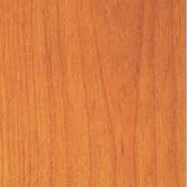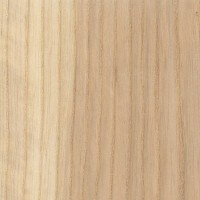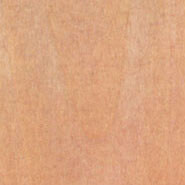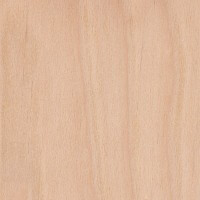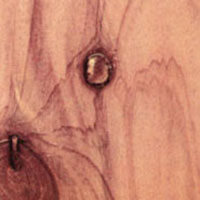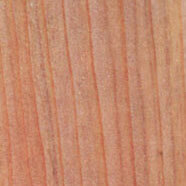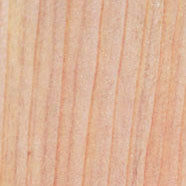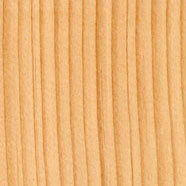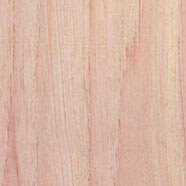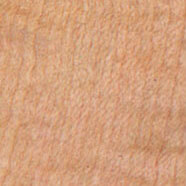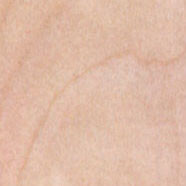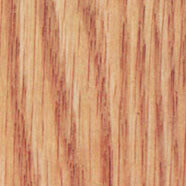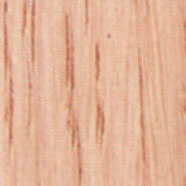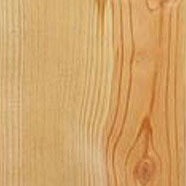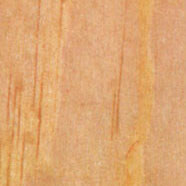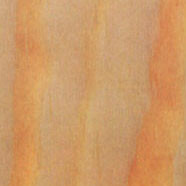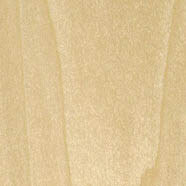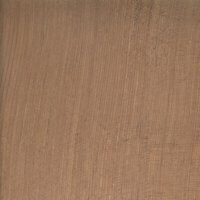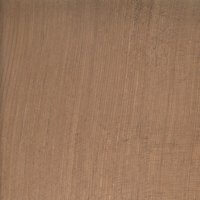Forest Stewardship Council® (FSC®) Certified Material
Hood Distribution supports responsible forest management and is FSC Chain of Custody (CoC) certified. Learn More.

Alder

General Characteristics:
Alder is cut from the western faces of the Cascade Mountains of Washington and Oregon. It is light reddish-brown in color with a very fine or even texture. Alder is relatively light in comparison to most hardwoods. The grain pattern is very similar to Cherry and Soft Maple.
Typical Applications:
Alder is popular for kitchen cabinet construction due to the upper grade’s resemblance to the more expensive Cherry and the lower grade’s rustic appearance. Alder is also used in many millwork applications including the construction of stile & rail doors.
Alder is cut and sold on its own unique grading standards. This species does not follow the National Hardwood Lumber Association grading rules. See the Lumber Grades Tab for additional information.
Availability:
Alder is typically available in various thicknesses in the following grades: Superior, Superior One Face, Premium Frame/Rustic, and Cabinet.
Ash: White & Natural

General Characteristics:
Ash is typically sorted and purchased to be “white” in color and medium in texture. This lumber is known for its stability and is less prone to the twist and cup that is prevalent in many other hardwoods. The open grain provides a very attractive and unique appearance when finished. Natural or Brown Ash is also available. It is sometimes referred to as Cabinet Ash. The grain is very similar to that of all Ash lumber, but the color is a light brown to tan.
Typical Applications:
Ash is a very popular choice in the South for cabinetry and moulding. It is also purchased and utilized quite extensively in the furniture industry. Select cuts and sorts of 8/4 Ash are utilized in the construction of guitars as body stock.
Availability:
White Ash and Natural Ash are available in various thicknesses in FAS1F and #1 Common grades.
Basswood

General Characteristics:
Basswood is botanically a hardwood; however, it is very light in weight and roughly half the density of Oak. It is known for its workability and is often used in place of or in conjunction with Hard Maple, Soft Maple, and Birch due to its creamy white appearance.
Typical Applications:
Basswood is very desirable among carvers and turners. It is used extensively in the production of moulding and in the construction of cabinetry. Basswood is also a very popular choice in the interior shutter industry for both paint-grade and stain-grade applications.
Availability:
Basswood is typically available in various thicknesses in Select & Better and #1 Common grades.
Birch

General Characteristics:
Birch is a relatively dense wood with a closed tight grain. This makes for a very stable and strong material offering; however, difficulty in machining can be an issue. Most cut Birch is light tan to light yellowish-brown and is commonly known as “Yellow Birch”. However, mill sorts are also completed to yield “White Birch” (sapwood) and “Red Birch” (heartwood). Southern Birch is also cut to yield a product that has a fair amount of mineral fleck throughout the board. Birch trees are not large, so long lengths and wide widths are not readily available.
Typical Applications:
Birch is predominately used in the manufacture of veneers for the plywood industry. Birch lumber is also used in the manufacture of furniture and cabinetry.
Availability:
Birch is typically available in various thicknesses in Select & Better and #1 Common grades.
Cedar: Aromatic

General Characteristics:
General Characteristics Cedar is typically knotty and red in color with the sapwood being pale tan to white. Aromatic Cedar lumber averages 5 inches wide and 8 feet long. It produces an odor that is extremely offensive to moths, but pleasing to humans.
Typical Applications:
Aromatic Cedar is almost exclusively used in the construction of cedar chests and the lining of closets.
Availability:
Aromatic Cedar is typically available in 4/4 thickness in #1 Common grade.
Cedar: Atlantic White

General Characteristics:
The heartwood of Atlantic White Cedar is a light reddish-brown while the narrow sapwood is pale yellow-brown to almost white, and is clearly demarcated from the heartwood. It has a straight grain with a fine uniform texture. It is easy to work with both hand tools and machine tools and it finishes well. Atlantic White Cedar has a high level of decay resistance and a characteristic cedar-like scent.
Typical Applications:
Atlantic White Cedar is often used in boat building, carving, siding, shingles, and construction lumber.
Availability:
Atlantic White Cedar is typically available in various thicknesses and grades. Special order patterns are available.
Cedar: Western Red


General Characteristics:
Western Red Cedar is lightweight and durable under exposure to rain, sun, heat, and cold. The wood stains, machines, and seasons very well. Red Cedar has a reddish-brown heartwood that oxidizes to a dull brown upon exposure to the sun.
Typical Applications:
Western Red Cedar is very popular for a variety of exterior applications that range from trim boards to siding and decking to fencing.
Rustic hand-split Western Red Cedar post & rail is highly resistant to insects, fungus, rot, and the effects of moisture. It is split to preserve the natural beauty and texture that makes this fence so attractive.
Availability:
Western Red Cedar is available as boards, timbers, split rails & posts, bevel siding, and shakes & shingles.
Cherry

General Characteristics:
The finest Cherry is grown and sawn in the Northeastern United States. Cherry is easy to machine and finishes very nicely. It has a tight, slightly swirling but unassuming grain. The more desirable heartwood is reddish-brown while the sapwood is a light yellow shade. Cherry is also offered as a steamed product. The steaming process minimizes the distinction between heartwood and sapwood.
Typical Applications:
Cherry has long been a leading choice among the cabinet and furniture industries. It is also a popular choice among designers for wall paneling, flooring, and retail fixtures.
Availability:
Cherry is typically available in various thicknesses in Select & Better and #1 Common grades.
Cypress: Sinker

General Characteristics:
Sinker Cypress is cut from logs that were felled but then sunk to the bottom of a river or lake. These logs are recovered from under the water usually after the sapwood has rotted away leaving only the heartwood. The heartwood is reddish-brown in color and resists the elements very well.
Typical Applications:
Sinker Cypress is an excellent choice for exterior applications such as bevel siding. Its natural color bears a striking resemblance to Teak.
Availability:
Sinker Cypress is typically available in various thicknesses in Select & Better grade. Please inquire about special order specifications for other thicknesses and specified widths.
Cypress: Yellow

General Characteristics:
Yellow Cypress is more readily available in comparison to Sinker Cypress although it does not carry all the same characteristics of the Sinker. Yellow Cypress is light tan in color and sometimes carries an orange cast. It machines and finishes very well.
Typical Applications:
Yellow Cypress is often used outdoors as well as indoors. It is typically used in the manufacturing of paneling, furniture, and fencing.
Availability:
Yellow Cypress is typically available in various thicknesses in Select & Better and #2 Common grades.
Fir: Douglas

General Characteristics:
Douglas Fir is North America’s most plentiful softwood. It is among the strongest and hardest softwood species. Fir is unique among all softwood species in being naturally dimensionally stable, and seasoning well in situ. Douglas Fir has a light rosy color that is set off by its remarkably straight and handsome grain pattern. The color will darken or “redden” over time when exposed to light. The tough fiber makes it difficult to work with hand tools. However, it responds very well to sharp power tools and machines to an exceptionally smooth, glossy surface.
Typical Applications:
Douglas Fir is utilized extensively in the millwork industry with the manufacture of doors, windows, and moulding. It is also a choice among designers for cabinets and furniture. Douglas Fir is a top choice for structural and decorative beams.
Availability:
Douglas Fir is typically available in various thicknesses and grades.
Hickory

General Characteristics:
Hickory is considered to be one of the densest of all commonly used hardwoods. Hickory is known for its relatively closed grain and reddish-brown to light tan color. There is usually no distinction made between Hickory and Pecan when they are being cut and graded. They are considered interchangeable.
Typical Applications:
Hickory and Pecan are both used quite extensively in the manufacturing of flooring. Hickory has grown in popularity as a choice in cabinetry and furniture. Hickory is also an excellent choice in the manufacture of drum sticks.
Availability:
Hickory is typically available in various thicknesses in Select & Better and #1 Common grades.
Maple: Hard

General Characteristics:
Hard Maple is a very popular and widely used hardwood. It is very dense and is generally a pale tan color. Hard Maple is typically sorted at the sawmills and sold in 3 distinct categories. #1 & #2 white is sorted and sold for a premium due to its uniform white appearance. The second category “unselected” will have a mixture of the darker heartwood and the whiter sapwood within the same board. “Brown” is the byproduct of these sorts and is used in paint grade or dark stain applications.
Typical Applications:
Hard Maple has a wide variety of uses including flooring, cutting surfaces, fixtures, and furniture. The floors of basketball courts and bowling alleys are typically constructed from Hard Maple flooring.
Availability:
Hard Maple is typically available in various thicknesses in Select & Better and #1 Common grades.
Maple: Soft

General Characteristics:
Soft Maple possesses many of the same general characteristics as Hard Maple. However, it is not nearly as dense or strong. Soft Maple is medium in density with a fine texture and close grain. It has excellent machining and finishing properties. A great deal of Soft Maple is cut and sorted to yield a product that is 80% white one-face. However, the product is also sorted to yield a 100% white one face that is offered at a premium price. The heartwood varies from pale to reddish-gray and the sapwood is white to off-white.
Typical Applications:
Soft Maple is predominately used in the construction of cabinetry and in the manufacture of a wide variety of moulding profiles for both paint and stain applications. Soft Maple is also utilized in the furniture and fixture industries.
Availability:
Soft Maple is typically available in various thicknesses in Select & Better and #1 Common grades.
Oak: Red

General Characteristics:
Red Oak is one of the best known, and most widely used, species of wood in the United States. The color, cost, and perceived quality of the wood are often dictated by its region of origin. The most common sources of Red Oak in descending order are Northern, Appalachian, and Southern. The farther North the Oak is sawn; the more consistent in color the product is. Red Oak is very hard; however, it machines, stains, and finishes quite well. The open grain of Red Oak often does not require filling as part of the finishing process. Red Oak varies in color from light pink to light red.
Typical Applications:
Red Oak has a wide variety of applications. It has been a top choice in the cabinet and furniture industries for years. Red Oak is used extensively for flooring and moulding as well. It is also a very popular choice in the construction of interior and exterior doors and windows.
Availability:
Red Oak is typically available in various thicknesses in FAS1F and #1 Common grades. Rift and Quarter Sawn options are available in select thicknesses.
Oak: White

General Characteristics:
White Oak is the more desirable choice in the Oak family. It is denser than Red Oak and possesses a more even texture. Therefore, White Oak is easier to work and finish in comparison to Red Oak. Due to the abundance of tyloses in the pores of White Oak, it can be used in certain exterior applications. White Oak can be very light gray to very light tan in color.
Typical Applications:
White Oak is a favorite choice for architectural millwork. It is also used extensively in the furniture and flooring industry. Because of its durability with exposure to the elements, White Oak is often used for truck and trailer beds.
Availability:
White Oak is typically available in various thicknesses in FAS1F and #1 Common grades. Rift and Quarter Sawn options are available in select thicknesses.
Pecan

General Characteristics:
There is generally no distinction made between Pecan and Hickory when the two are sawn and graded and later distributed. Pecan is a medium-density hardwood with a closed grain that has an attractive appearance in both clear and stain finishes. It is light tan to reddish-brown in color.
Typical Applications:
Pecan has grown in popularity as a choice in the hardwood flooring industry. It has also long been a choice for fine furniture and cabinetry.
Availability:
Pecan is typically available in various thicknesses in FAS1F and #1 Common grades.
Pine: Eastern White

General Characteristics:
Eastern White Pine is very soft and lightweight. It is a pale yellow to light cream in color. It machines and glues very well. D Select contains a minimal amount of small knots. Furniture Grade contains a great deal of large but tight knots and is the grade of choice where “knotty pine” is requested.
The Northeastern Lumber Manufacturers Association (NeLMA) is the grading authority and rules writing agency for Eastern White Pine. The NeLMA grade stamp has long been the trusted symbol of quality and excellence since 1933.
For more information: www.nelma.org
Typical Applications:
Eastern White Pine is used for cabinetry and millwork. It is also utilized by woodworks as pattern lumber.
Availability:
Eastern White Pine is typically available in various thicknesses in Furniture (Knotty) and C & Better grades. 1×4 thru 1×12 S4S boards are available in Standard, Premium and D & Better grades. Clear finger-joint S4S boards are also available.
Pine: Ponderosa

General Characteristics:
Ponderosa Pine is a very stable wood and machines extremely well. It is lightweight with a straight grain and even texture. The heartwood is brown to light tan while the sapwood is white.
Typical Applications:
Ponderosa Pine is used extensively in the millwork industry in the manufacture of wood windows and doors. It is also a very popular choice for moulding.
Availability:
Ponderosa Pine is typically available in various thicknesses in C & Better and Moulding grades. 1×12 S4S boards are also available in #2 Common and #3 Common grades.
Pine: Southern Yellow

General Characteristics:
Southern Yellow Pine is a collective term that encompasses several species that grow throughout the Southern United States. There is no real separation or distinction of the species when they are sawn and marketed as lumber. The only real separation is the distinction between Longleaf Yellow Pine and Shortleaf Yellow Pine. Yellow Pine is usually very coarse-textured with highly pronounced growth rings. It is typically brownish-yellow and sometimes has an almost orange tint. Yellow Pine is most often soft and relatively easy to work. However, depending on where it is grown, it can sometimes be as dense as Oak.
Typical Applications:
Yellow Pine has a wide variety of applications, with the bulk of it used for structural components in the building industry. Yellow pine is also often run into tongue and groove flooring, beaded ceiling, and bevel siding profiles.
Availability:
Southern Yellow Pine is available is a wide variety of product offerings: 1×4 thru 1×12 S4S in C & Better and #2 Grade, 2×6 thru 2×12 S4S in C & Better grade, various pattern stock in D & better and #2 Grade, KDAT boards & dimension in C & Better Grade, and 4/4, 5/4, 6/4 and 8/4 rough lumber in C & Better Grade.
Poplar: Yellow

General Characteristics:
Yellow Poplar is one of the most valued of all the hardwood species because of the abundance of supply and versatility. It is reasonably stable and machines and glues quite well. Poplar has a light to dark green heartwood with creamy sapwood.
Typical Applications:
Yellow Poplar has a multitude of uses. It is used extensively for both paint- and stain-grade moulding. Cabinet door manufacturers use Poplar in many paint-grade applications.
Availability:
Yellow Poplar is typically available in various thicknesses in FAS1F and #1 Common grades.
Redwood

General Characteristics:
Cut from the center of the tree, redwood timbers are all heartwood with a rich, reddish-brown tone and natural resistance to termites and decay. All of our Redwood timbers are manufactured in two Humboldt Sawmills, ensuring a uniform, consistent product whereas Cedar is sourced from many mills, resulting in more variation in product quality. Redwood timbers have been shown in tests to be 30% stronger than same-sized cedar timbers.
Typical Applications:
Redwood timbers can be used in any application where cedar has traditionally been used. Typical applications include arbors, barns, beams, framing, headers, posts, rafters, shade structures, and trellises.
Availability:
Redwood is typically available in various thicknesses and grades. Visit our Redwood Timbers page for more information.
Spruce

General Characteristics:
Spruce lumber is relatively soft; however, the strength is especially good in comparison to the weight. The texture is very uniform with light tan to reddish-brown heartwood and off-white sapwood. White Spruce, Red Spruce, and Black Spruce can be found all over the Northern United States, Canada. These three species are usually mixed together and traded as Eastern Spruce.
Typical Applications:
Spruce is used extensively in structural framing applications. It is also utilized in exterior painted trim and is an excellent choice for hobbyists.
Availability:
Spruce is typically available in various thicknesses in #2 Grade.
Walnut

General Characteristics:
Walnut has been a popular choice among woodworkers for many years. It machines and glues very well and is extremely stable. The majority of Walnut that is distributed has been steamed. This process blends the heartwood and sapwood in an effort to provide more uniformity in the color of the entire board. The heartwood is brown to black and the sapwood is almost white. Walnut is one of the few kinds of wood that lighten (instead of darkening) with age.
Typical Applications:
Walnut is used extensively in the manufacture of fine furniture and cabinetry. It is also a favorite choice for gun stocks.
Availability:
Walnut is typically available in various thicknesses in FAS1F and #1 Common grades.

